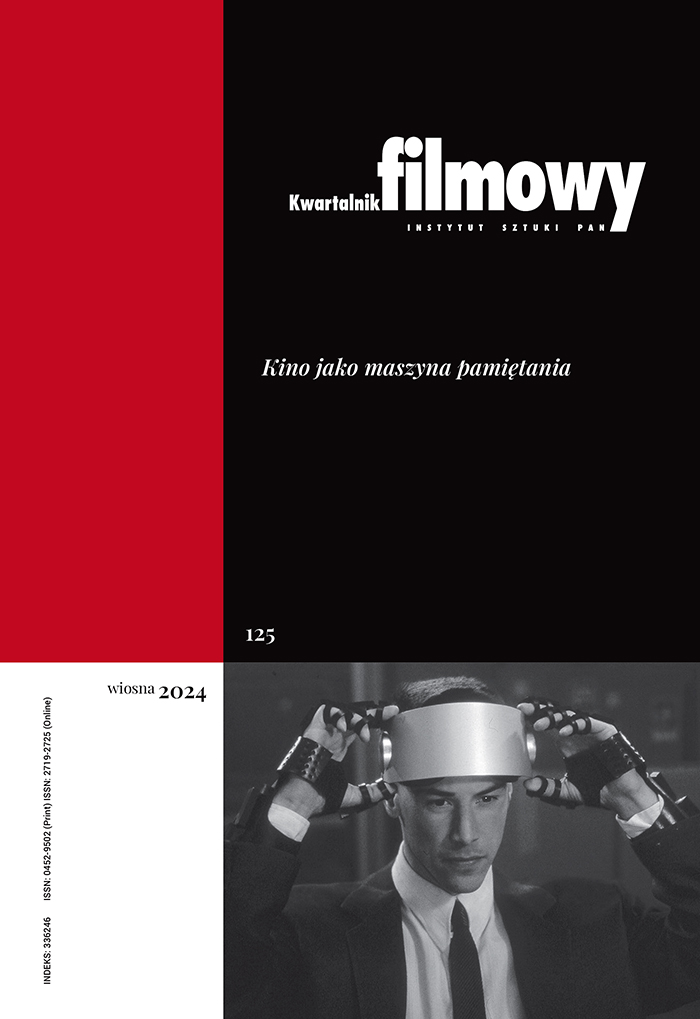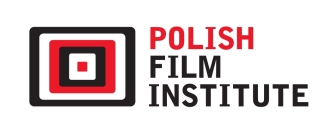(Self)Therapeutic Dimension of Marcin Koszałka’s “Family” Films
Abstract
The author analyses Koszałka’s three documentaries which are the part of a set of so-called family trylogy: Takiego pięknego syna urodziłam, Jakoś to będzie and Ucieknijmy od niej, treating them as if a director’s selftherapy. In every single film the director is, at the same time, a creator, a main character and an inciter of events. Koszałka creates unusually personal, auteur, authentic cinema often on the brink of psychodrama and his selftherapy, which he openly admits to, does not rule out viewer’s therapy for whom, his work might turn out to be difficult but really needful lesson. Since the author creates significant and revealing films and any fact in these pictures is only individual - a seemingly narcissistic director does not work only for himself, he does not try to explain certain phenomena only and exclusively for himself, he does not fulfil only his ambition and therapeutic needs.
Keywords:
Marcin Koszałka, therapy, family filmReferences
Berg-Cross Linda, Pamela Jennings, Rhoda Baruch, Cinematherapy: Theory and Application, „Psychotherapy in Private Practise” 1990, nr 1, s. 135-156.
DOI: https://doi.org/10.1300/J294v08n01_15
Google Scholar
Doktor film, z Anną Jędyczką-Hamerą rozmawia Ola Salwa, „Film” 2009, nr 4, s. 46-47.
Google Scholar
Hendrykowski Marek, Biografizm w kinie współczesnym, „Kwartalnik Filmowy” 2007, nr 59, s. 67-68.
Google Scholar
Jacyno Małgorzata, Kultura indywidualizmu, Warszawa 2007, s. 182-183.
Google Scholar
Kamera znieczula. Z Marcinem Koszałką rozmawia Karolina Pasternak, „Przekrój” 2010, nr 15, s. 18.
Google Scholar
Kratochvil Stanislav, Podstawy psychoterapii, tłum. M. Czabak, E. Matuska, Poznań 2003, s. 19.
Google Scholar
Lubelski Tadeusz, Cały dzień razem, „Kino” 2006, nr 6, s. 10.
Google Scholar
Lubelski Tadeusz, Kamera w rodzinie, „Kino” 2005, nr 3, s. 13.
Google Scholar
Nie można udawać, że wszystko jest piękne – Z Marcinem Koszałką rozmawia Remigiusz Grzela, „Kino” 2000, nr 6, s. 7, 9.
Google Scholar
Sobolewski Tadeusz, Swoimi słowami. Kochaj i rób co chcesz, „Kino” 2000, nr 4, s. 62.
Google Scholar
Solomon Gary, The Motion Picture Prescription. Watch This Movie and Call Me in the Morning, Santa Rosa 1990.
Google Scholar
Śmierć nie musi kończyć życia – z Marcinem Koszałką rozmawia Krystyna Lubelska, „Polityka” 2006, nr 44, s. 89.
Google Scholar
Wolz Birgit, E-Motion Picture Magic: A Movie Lover’s Guide to Healing and Transformation, Centennial 2005.
Google Scholar
Wycisnąć sens z trupa, z Marcinem Koszałką rozmawia Katarzyna Bielas, „Gazeta Wyborcza – Duży Format” 2007, nr 46, s. 6, 7, 8.
Google Scholar
Authors
Małgorzata Kozubekkwartalnik.filmowy@ispan.pl
University of Wrocław Poland
Absolwentka filmoznawstwa na Uniwersytecie Jagiellońskim oraz Studiów Doktoranckich Nauk o Kulturze na Wydziale Nauk Historycznych i Pedagogicznych Uniwersytetu Wrocławskiego. Rozprawę doktorską poświęciła zagadnieniu filmoterapii. Obecnie wykładowczyni w Instytucie Kulturoznawstwa Uniwersytetu Wrocławskiego.
Statistics
Abstract views: 30PDF downloads: 17
License
Copyright (c) 2011 Małgorzata Kozubek

This work is licensed under a Creative Commons Attribution 4.0 International License.
The author grants the publisher a royalty-free non-exclusive licence (CC BY 4.0) to use the article in Kwartalnik Filmowy, retains full copyright, and agrees to identify the work as first having been published in Kwartalnik Filmowy should it be published or used again (download licence agreement). The journal is published under the CC BY 4.0 licence. By submitting an article, the author agrees to make it available under this licence.
In issues from 105-106 (2019) to 119 (2022) all articles were published under the CC BY-NC-ND 4.0 licence. During this period the authors granted a royalty-free non-exclusive licence (CC BY-ND 4.0) to use their article in „Kwartalnik Filmowy”, retained full copyright, and agreed to identify the work as first having been published in our journal should it be published or used again.
Most read articles by the same author(s)
- Małgorzata Kozubek, The Second (Digital) Life of Orson Welles’ Films , Kwartalnik Filmowy: No. 113 (2021): Film and Technology
- Małgorzata Kozubek, Around the World With Orson Welles , Kwartalnik Filmowy: No. 107 (2019): Journey, (E)migration, Pilgrimage
- Małgorzata Kozubek, The Imperfect Body?: Sexual Aspect of Physical Disability in Contemporary Cinema , Kwartalnik Filmowy: No. 83-84 (2013): Body in Film











